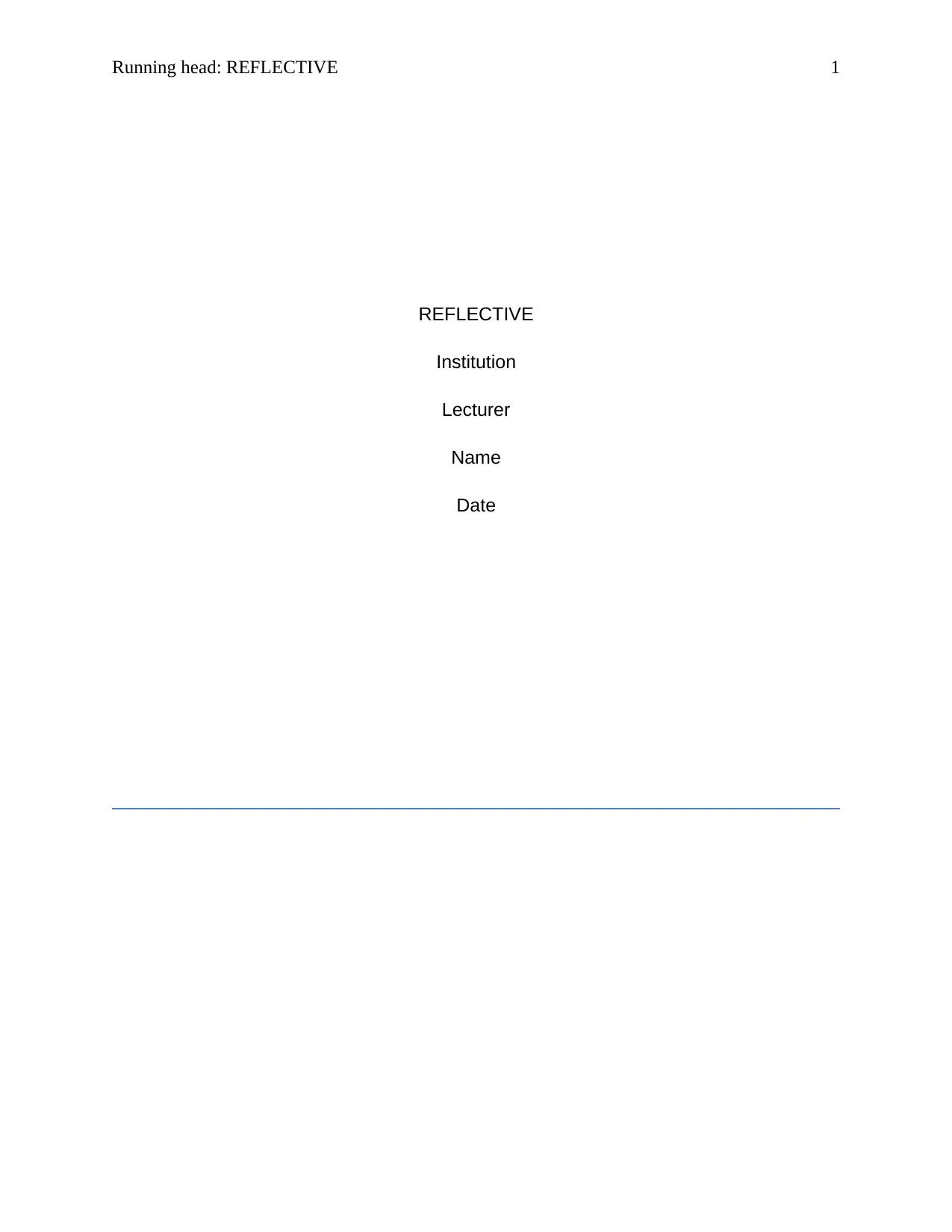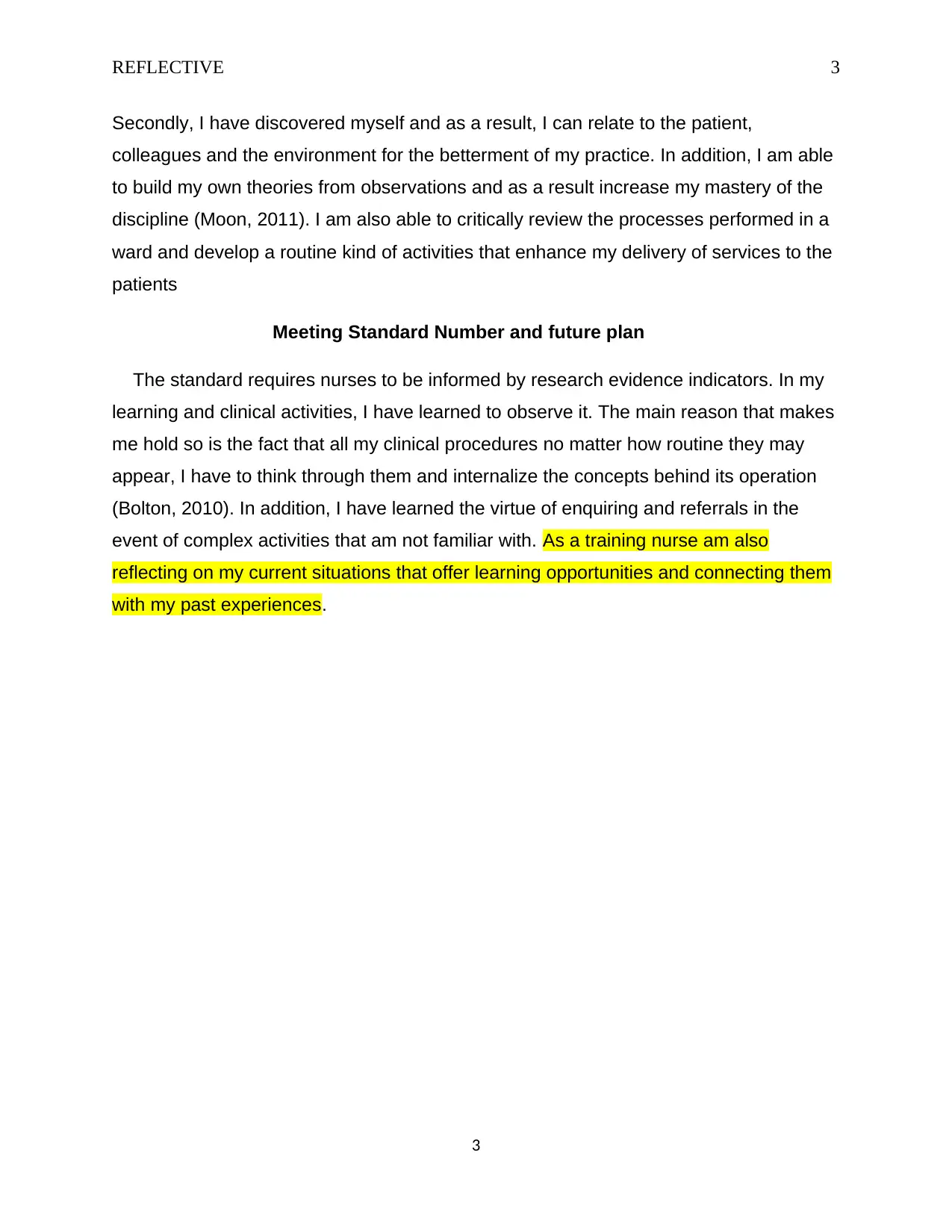Reflective Practice: Gibbs Model and Nursing Standards
VerifiedAdded on 2020/04/01
|4
|707
|418
Essay
AI Summary
This essay explores the significance of reflective practice for enrolled nurses, emphasizing its role in enhancing self-esteem, holistic development, and the application of theoretical knowledge. It discusses the Gibbs Model as a framework for reflection, detailing the stages from describing an event to drawing conclusions and creating action plans. The essay highlights the model's application in clinical and theoretical experiences, allowing nurses to relate theory to practice, build self-awareness, and develop their own theories. Furthermore, it addresses how reflective practice aligns with nursing standards, emphasizing the importance of research-based evidence and continuous learning. References to supporting literature are included, providing context and credibility to the discussion. The essay provides a comprehensive understanding of reflective practice and its benefits for nurses.
1 out of 4











![[object Object]](/_next/static/media/star-bottom.7253800d.svg)